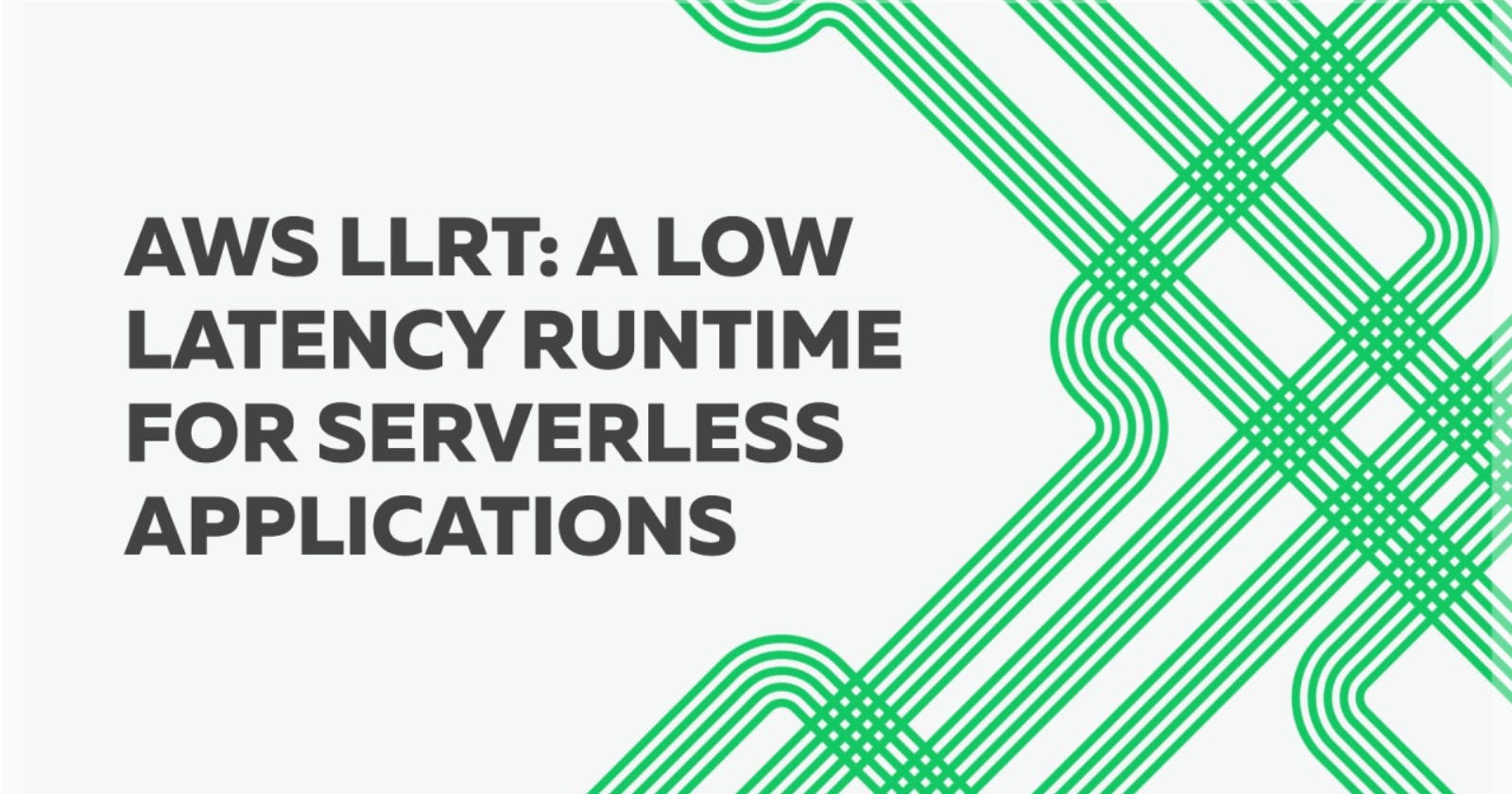AWS LLRT: A Low Latency Runtime for Serverless Applications
Are we witnessing a boom in the creation of JavaScript runtimes similar to javascript frameworks.
Like the ever-evolving landscape of JavaScript frameworks, are we witnessing a similar boom in the creation of JavaScript runtimes? Let's explore what LLRT is, how it works, and its potential benefits.
Introduction
LLRT (Low Latency Runtime) is a lightweight JavaScript runtime developed by AWS. Its primary goal is to provide significantly faster startup times and improved efficiency for serverless applications.
Key Features
1. Faster Startup Times: LLRT offers up to over 10x faster startup compared to other JavaScript runtimes running on AWS Lambda. This speed advantage is crucial for serverless functions that need to respond quickly to incoming requests.
2. Cost Savings: LLRT also boasts up to 2x overall lower cost compared to other runtimes. By optimizing memory usage and reducing startup time, it helps minimize the cost of running serverless workloads.
3. Built on Rust: LLRT is implemented in Rust, a systems programming language known for its performance, safety, and memory efficiency.
4. QuickJS Engine: LLRT utilizes the QuickJS JavaScript engine. QuickJS is a small and embeddable engine written in C, making it ideal for lightweight runtimes like LLRT.
How LLRT Differs from Other Runtimes
Unlike general-purpose runtimes like Node.js, Bun, or Deno, LLRT focuses specifically on the demands of serverless environments. Here are some key differences:
1. No JIT Compiler: Unlike Node.js, which relies on Just-In-Time (JIT) compilation, LLRT does not include a JIT compiler. This design choice simplifies system complexity and reduces runtime size while conserving CPU and memory resources.
2. Bundling Dependencies: To achieve its speedup, LLRT requires developers to bundle their code and dependencies into a single .js file. This eliminates file system lookups during module resolution—a common bottleneck in other runtimes.
3. Precompiled AWS SDK: LLRT pre-packages and precompiles parts of the AWS SDK into bytecode. This approach further contributes to faster application startup times.
Use Cases
LLRT is most efficient when utilized in smaller serverless functions with specific use cases:
1. Data Transformation: LLRT excels at data processing tasks where low latency matters.
2. Real-Time Processing: For real-time workloads, such as event-driven processing or streaming data, LLRT's fast startup time is invaluable.
3. AWS Service Integrations: When integrating with AWS services like DynamoDB or S3, LLRT ensures quick response.
Conclusion
LLRT shows promise but needs more stability, support, and real-world testing before it can be recommended for production use. If you're working with smaller serverless functions that require fast startup times and cost savings, consider exploring LLRT as an alternative runtime option.
